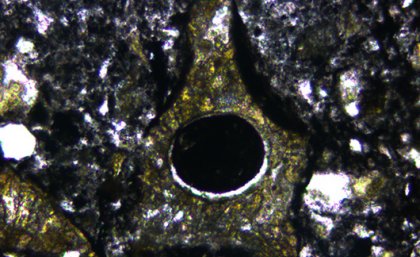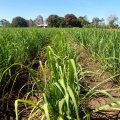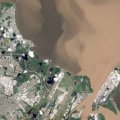
An ancient meteorite that struck Earth 1.85 billion years ago sparked long-lived volcanic eruptions bringing up material from the Earth’s depths, a new international study involving a University of Queensland researcher has revealed.
Lead author Dr Teresa Ubide from UQ School of Earth and Environmental Sciences said the study of a meteorite strike in Canada found that large impacts, which were more common on the early Earth, were probably more important in shaping our planet than previously thought.
“Impacts produce more than craters – they can also spark volcanic activity which can shape the Earth’s surface and climate by bringing up material from depth,” Dr Ubide said.
“The team discovered that large impacts can be followed by intense, long-lived, and explosive volcanic eruptions.”
Dr Ubide, who undertook much of the work while a postdoctoral research fellow at Trinity College Dublin, said the findings raised interest in similar volcanic activity on other planets. 
The team studied rocks filling one of the largest preserved impact structures on the planet in Ontario, Canada.
Dr Ubide said a large bolide meteor hit the Earth 1.85 billion years ago and created a deep basin, which filled with melted target rocks and later with jumbled mixed rocks full of tiny volcanic fragments, building up to form a 1.5 kilometre thick deposit.
The study, published in the Journal of Geophysical Research: Planets, found the composition of the volcanic fragments changed with time.
Immediately after the impact, volcanism was directly related to the melting of the Earth’s crust, however, over time, the eruptions appear to have been fed by magma coming from deeper levels within the Earth.
Trinity College Dublin Professor Balz Kamber, formerly of UQ, said this was an important finding as it meant that the magma sourcing the volcanoes changed with time.
“On the early Earth there was a relatively brief period during which about 150 very large impacts occurred, whereas since then only a handful have hit the Earth,” he said.
“The intense bombardment of the early Earth had destructive effects on the planet's surface but it may also have brought up material from the planet’s interior, which shaped the overall structure of the planet.”
The findings raise interest in topical research on similar volcanism on other planetary bodies like Mercury, Venus, Mars and the Moon.
Media: Dr Teresa Ubide, t.ubide@uq.edu.au, +61 0403 334 152, or Professor Balz Kamber, kamberbs@tcd.ie, +353 018962957










